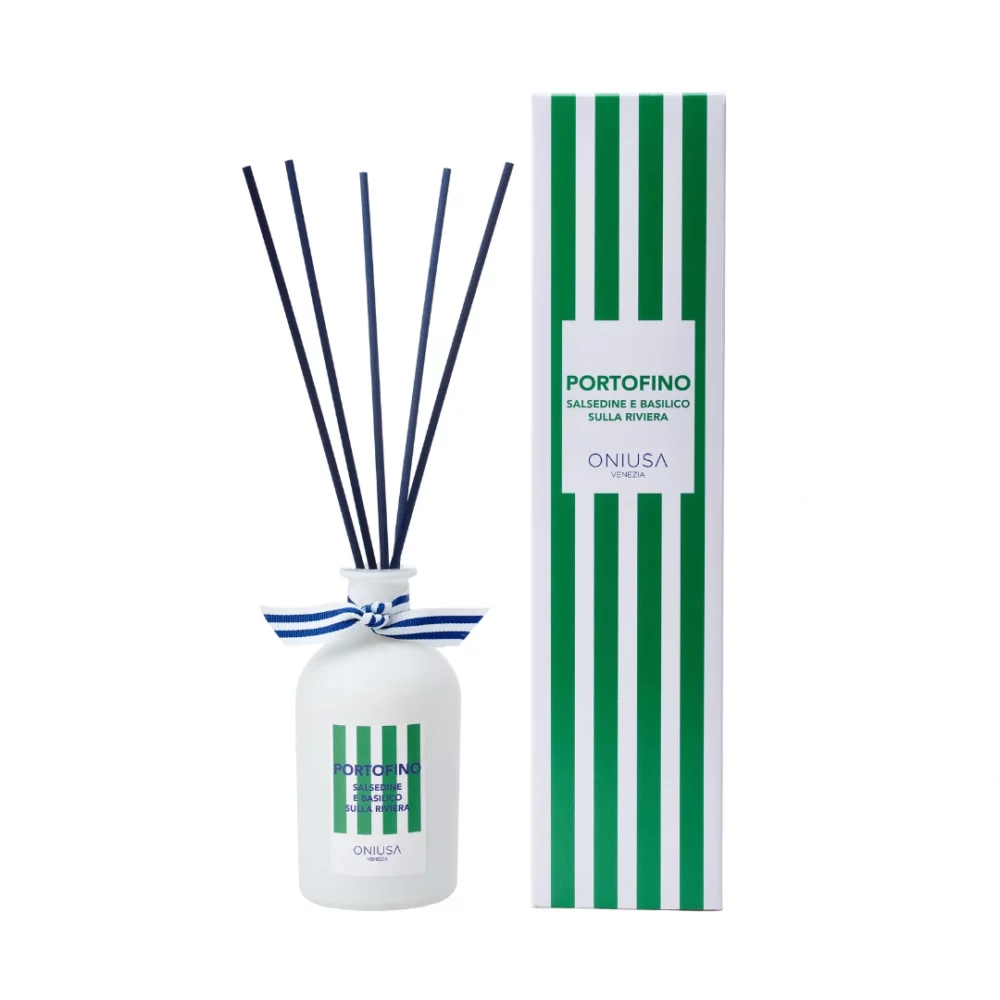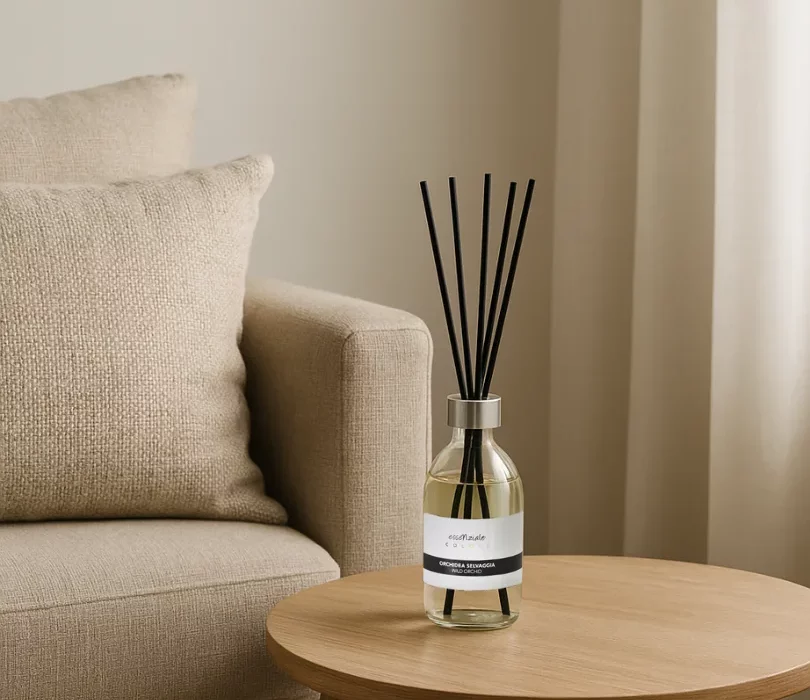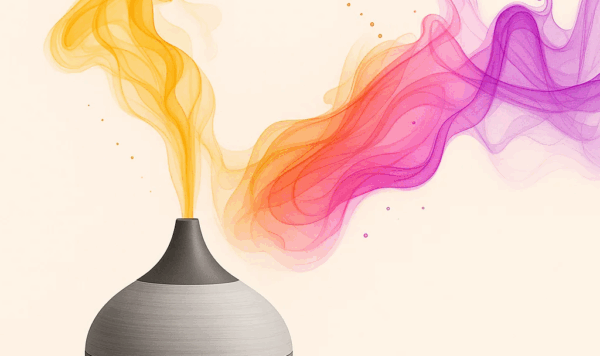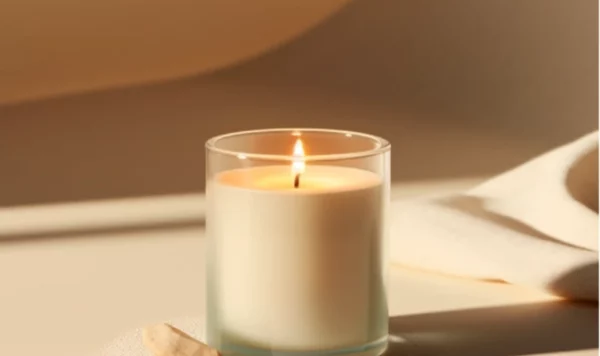In an era where home wellness is at the heart of design, furnishings are no longer just about what we see or touch—now, scent plays a leading role. Reed diffuser home fragrances are redefining the aesthetic of our homes, becoming central to an emerging trend: interior scentscaping.
This discipline, blending sensory design with the art of wellbeing, encourages us to design spaces through fragrances. It’s not just about making the air smell pleasant—it’s about creating a multi-sensory experience, capable of evoking memories, triggering emotions, and influencing our mood. The reed diffuser, elegant, discreet, and continuous, is the perfect tool for starting this daily olfactory journey.
1. What Is Interior Scentscaping?
Interior scentscaping is the fusion of “interior design” and “scentscape,” referring to the art of designing interiors through fragrance. It’s more than a decorative trend—it’s a rapidly growing concept combining aesthetics, neuroscience, and aromatherapy.
A Sense Often Overlooked: Smell
Unlike sight and touch, smell is directly linked to the limbic system—the part of the brain responsible for emotions and memory. This means every fragrance we choose for our home not only expresses a style, but can also:
- calm, like lavender in the bedroom;
- energize, like citrus in the kitchen;
- warm and welcome, like wood and vanilla in the living room.
A True Design Element
In scentscaping, reed diffuser home fragrances are selected with the same care as a sofa or a painted wall. Fragrances are matched to furniture styles, room functions, and even seasons:
- fresh and fruity for summer,
- spicy and warm for winter,
- delicate and floral for spring.
A Multisensory Harmony
The result? Spaces that communicate on every sensory level, enhancing our sense of identity and wellbeing. It’s not just about scent—it’s about creating an emotional landscape through powerful, invisible details.
2. The Role of Reed Diffuser Home Fragrances
Reed diffusers are no longer just tools to scent a room—they’ve become sensory decor elements, shaping the identity of a space through the invisible power of fragrance.
Their mechanism is simple yet refined: porous wooden sticks, often made of rattan, gradually absorb the scented liquid in the bottle and release it naturally into the air. This slow, consistent diffusion allows the fragrance to gently fill the room, creating a welcoming atmosphere without being overpowering.
What makes these diffusers so popular is their dual function: they scent the air while also serving as stylish decor pieces. Each diffuser can be selected based not only on its fragrance, but also on its container design—whether minimalist, rustic, luxurious, or modern—making it an integral part of the room’s visual language.
They also offer customizable intensity: simply add or remove sticks to adjust the strength of the scent. They don’t require electricity or frequent maintenance, making them ideal for any room—from living spaces to bedrooms, entryways to bathrooms.
In a world where our surroundings reflect our lifestyles and emotional states, choosing a reed diffuser home fragrance is a statement of taste and identity.
3. Interior Scentscaping Trends for 2025
As we move into 2025, a major shift is happening in how we scent our homes: interior scentscaping is becoming increasingly personalized, holistic, and sustainability-focused.
Multilayered Fragrances
Leading the way are multifaceted fragrances that evoke complex emotions and envelop spaces with rich olfactory profiles. Woody notes like sandalwood, cedar, and patchouli are making a strong comeback for their grounding and balancing qualities. At the same time, there’s a surge in citrus and herbal blends, perfect for energizing, fresh, and uplifting atmospheres.
Emotional Zoning
Another rising trend is fragrance zoning, where different rooms are scented based on their emotional function. For example:
- Home office or study → energizing scents like rosemary and lemon
- Bedroom → relaxing aromas such as chamomile, lavender, or white musk
- Bathroom → clean, aquatic or eucalyptus notes to evoke freshness and clarity
The idea of using a single scent throughout the home is giving way to room-specific fragrances, with each space telling a unique story. This also introduces the practice of scent layering, the thoughtful combination of multiple aromas to create seamless olfactory transitions from room to room.
Eco-consciousness is at the core of 2025’s scentscaping movement. There’s growing demand for natural essential oil diffusers, recycled or reusable glass packaging, and biodegradable sticks. Brands are adapting by offering refillable products and themed collections inspired by global destinations and cultures—turning scent into a medium for storytelling and mindful living.
4. How to Choose the Right Reed Diffuser for Each Room
Choosing the perfect reed diffuser home fragrance isn’t just a matter of personal taste—it’s a true act of sensory styling. Each room in your home has a different soul, a unique function, and its own energy. The right fragrance can amplify that atmosphere and enhance your daily experience.
Entrance: First Impressions Matter
The entryway is your home’s calling card. Here, a fresh and welcoming scent like bergamot, mint, or fig is ideal. These fragrances immediately create a sense of cleanliness and hospitality.
Living Room: The Heart of the Home
This is often the most social area and needs warm, enveloping scents that aren’t overpowering. Cedarwood, amber, vanilla, or soft spicy notes like cinnamon create a cozy atmosphere that invites relaxation and conversation.
Bedroom: Relaxation and Harmony
This is your personal retreat, so fragrance becomes a wellness tool. Lavender, chamomile, white musk, or orange blossom are perfect for promoting rest and sleep. Go for gently diffused, steady scents that soothe you throughout the night.
Bathroom: Freshness and Purity
Bathrooms benefit from clean, invigorating scents such as marine notes, eucalyptus, green tea, or citrus. These aromas bring a spa-like freshness and elevate your daily routine.
Home Office or Study: Focus and Inspiration
Citrus-based scents like grapefruit, lemon, and rosemary boost focus and mental clarity. Ideal for working or studying, these fresh fragrances help maintain energy and attention.
Of course, diffuser design plays a vital role too. Whether minimal, colorful, frosted glass or ceramic, choose a model that complements your room’s visual mood. The bottle size should also be proportionate to the room’s size to ensure even diffusion.
Conclusion
Reed diffuser home fragrances have evolved beyond mere accessories—they are now essential elements in the language of interior design. In the era of interior scentscaping, every room carries its own scent, every space its own olfactory identity. Fragrance doesn’t just complete visual styling—it enhances it, brings it to life, makes it memorable.
Consciously selecting the right scent for each area of your home means designing emotions, shaping memories, and creating a space that is not only lived in—but deeply felt. A single drop of essence, a reed stick slowly releasing it—that’s the new definition of luxury, crafted from invisible yet powerful details.
In a world that moves fast, taking a moment to breathe becomes an act of quiet revolution. And a good reed diffuser is the perfect companion in this small yet meaningful daily ritual.
FAQ – Frequently Asked Questions
How long does a reed diffuser last?
On average, between 4 and 8 weeks, depending on the bottle size, oil quality, and room temperature.
Can I use the same fragrance throughout the whole house?
Yes, but it’s best to tailor scents to each room, creating distinct atmospheres based on function and mood.
How can I increase or decrease the fragrance intensity?
Adjust the number of reeds inserted in the bottle. More reeds = stronger scent.
Where should I place a reed diffuser?
In well-ventilated areas, away from direct heat. Ideally, place them at nose level on a shelf or table for even scent diffusion.









